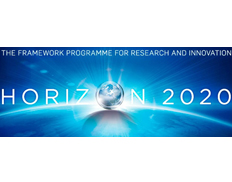Share
Print

Jul 22, 2019 2:15:34 PM
The flash call info has been published for this call, under "Additional documents"
Apr 26, 2019 12:20:53 PM
On 25 April 2019, a total of 82 proposals were submitted in response to the following 2019 topic:
LC-BAT-1-2019: 14 proposals
Jan 24, 2019 12:30:00 AM
The submission session is now available for: LC-BAT-1-2019(RIA)
26 July 2018 10:23
Please do not forget to read the "call summary" section, which includes relevant information for topic LC-BAT-1-2019.
| Topic identifier: | LC-BAT-1-2019 | ||
| Publication date: | 27 October 2017 | ||
| Focus area: | Building a low-carbon, climate resilient future (LC) | ||
| Types of action: | RIA Research and Innovation action | ||
| DeadlineModel: Planned opening date: |
single-stage 24 January 2019 |
Deadline: | 25 April 2019 17:00:00 |
| Time Zone : (Brussels time) | |||
Horizon 2020
International developments towards less air pollution and CO2 production are pushing towards a rapid implementation of electrification of transport. In addition, according to market forecasts, a rapid growth of the sales and deployment of battery electric vehicles (BEV) is predicted. Considering the global competition, the rush for better technology implies also the need for a better traction battery technology as a key enabling technology. Europe has to regain its competitiveness in markets that nowadays are dominated by non-European countries. This could occur by developing a new European owned battery technology.
Furthermore, an international tendency of Original Equipment Manufacturers (OEM) is to consider more and more the solid state technology as a solution that could replace the current Li-ion technology based on liquid electrolytes. The reason is the need of higher energy density, but also of inherently safe batteries.
New chemistries, materials and production technologies have to be developed to strengthen the European industrial base, in line with the EU initiatives as the Strategic Energy Technology Plan (SET Plan) Implementation Plan for Action 7 ('Batteries') and in support of the Šefčovič battery initiative “EU Battery Alliance”, to be ready for market deployment by 2026.
This challenge is based on the results of previous calls and stakeholder consultations[1] and is supplementary to the topic published in the Sustainable Transport Challenge of 2019 on “Next generation of high energy density, fast chargeable lithium ion batteries”.
Scope:Activities should develop further the current solid state battery technology and present solutions beyond the current state-of the art of solid state electrolytes that are suffering from various issues, e.g. a too high operating temperature, too low ion conductivity, too high impedance of the electrode electrolyte interface, short cycle life and lack of knowledge of suitable production technologies at a competitive cost. The ideal solid state battery and electrolyte would provide a solution for all these shortcomings.
Three dominant categories of electrolyte materials seem to emerge:
Solid state technology, according to a recent stakeholder proposal, has been classified in 2 sub-generations:
This call addresses all three main categories of electrolyte materials mentioned above, and includes also solid state batteries of the so-called "post Lithium-ion" batteries (generation 4a and 4b), as e.g. solid state forms of Li-S or Li-air.
The work should include:
The developed cells should meet the typical EV operating conditions in a broad temperature range, i.e. 10 to 50 ºC. Moreover, the cells should demonstrate negligible loss of charge during lengthy standby periods at sub-zero temperatures. Fast charging requirements of BEV should be met. Cyclability should be suitable for application in BEV.
The choice of the electrolyte to be developed should be duly justified in terms of chances of market success in the coming years. Validation of a pre-industrial prototype in relevant industrial environment should include an assessment of the scale-up potential in view of large scale manufacturability.
The TRL level of the project should start at TRL 3 and reach TRL 6 at the end of the project.
The Commission considers that proposals requesting a contribution from the EU between EUR 6 and 8 million would allow this specific challenge to be addressed appropriately. Nonetheless, this does not preclude submission and selection of proposals requesting other amounts.
Expected Impact:Relevant indicators and metrics, with baseline values, should be clearly stated in the proposal.
The proposal has to do a thorough Life Cycle Analysis cradle to cradle and consider recycling as far as possible.
This work contributes to the work developed in the running EC-EGVIA agreement and to EGVI related activities of the “Transport Challenges”.
Cross-cutting Priorities:Clean Energy
Contractual Public-Private Partnerships (cPPPs)
EGVI
[1]"Innovative batteries for eVehicles Workshop", 12 May 2017, and
"European Battery Cell R&I Workshop", 11 - 12 January 2018, European Commission DG RTD
